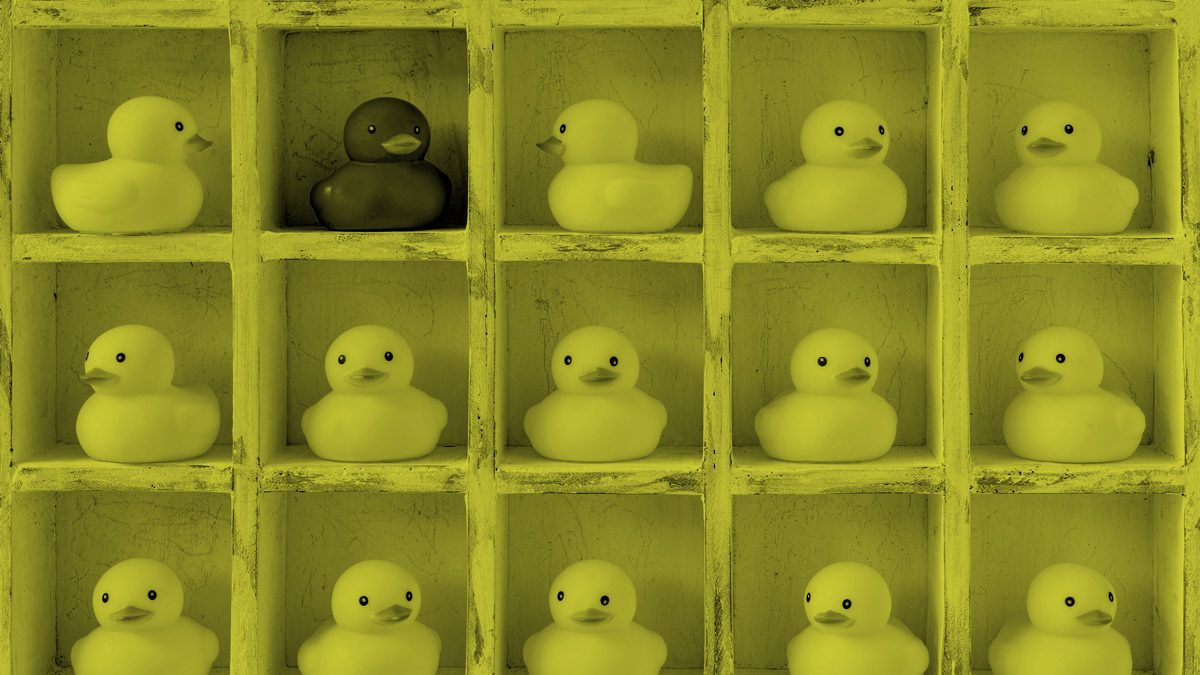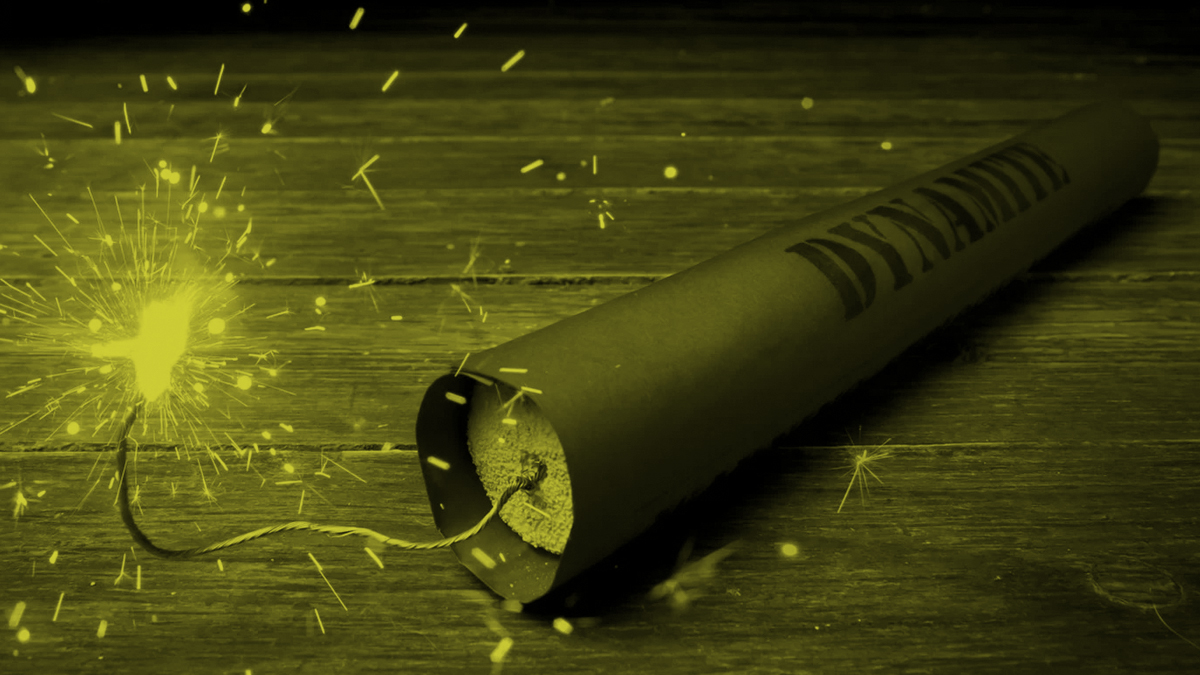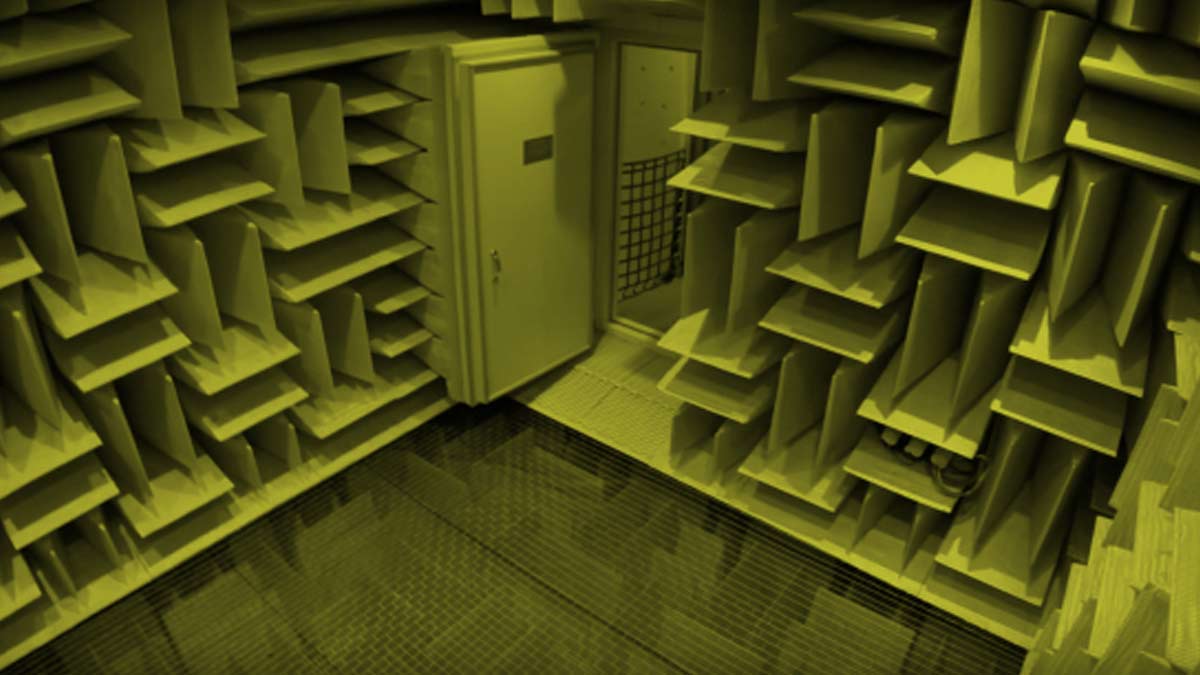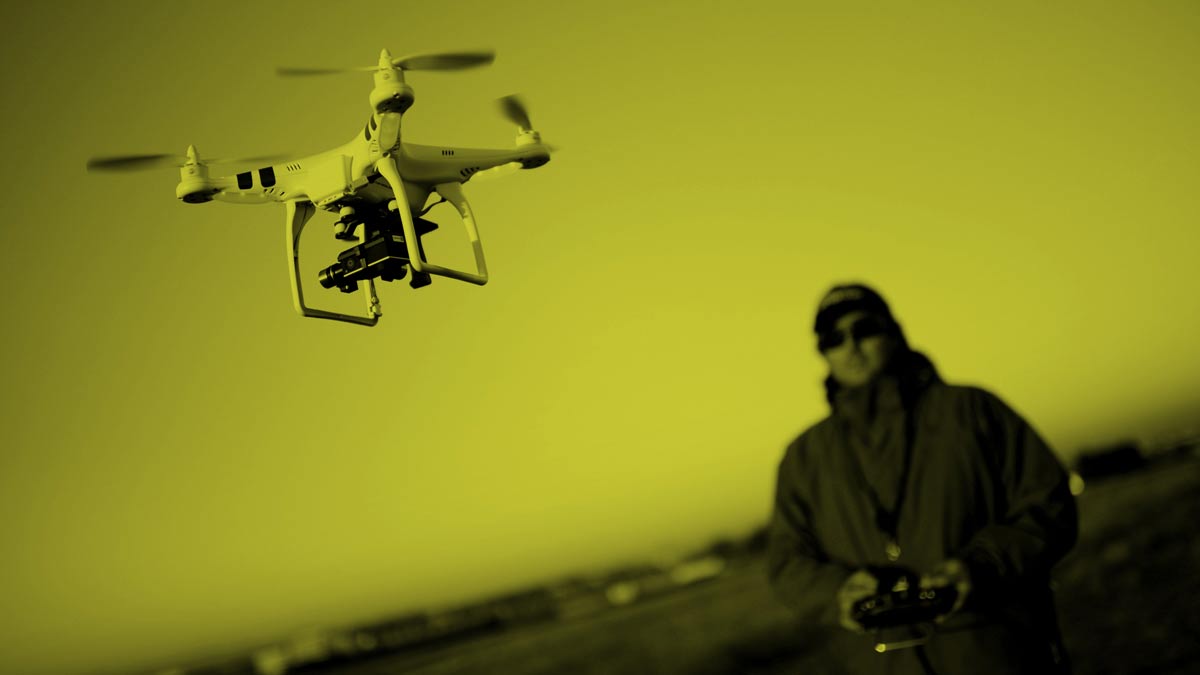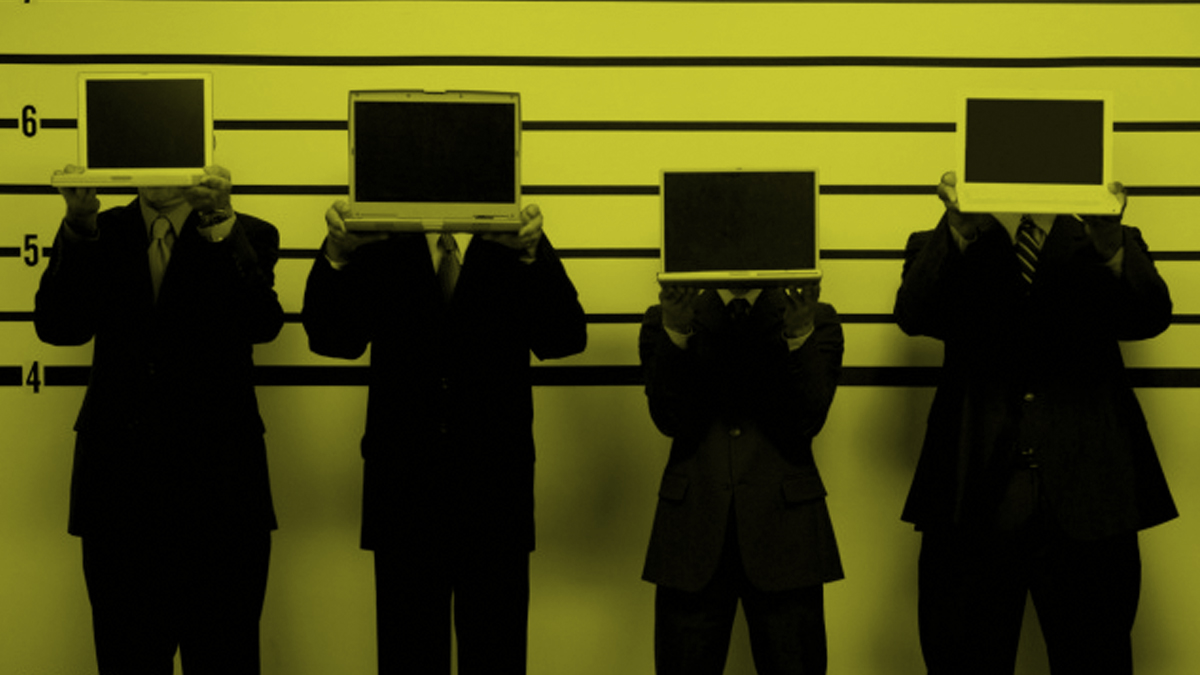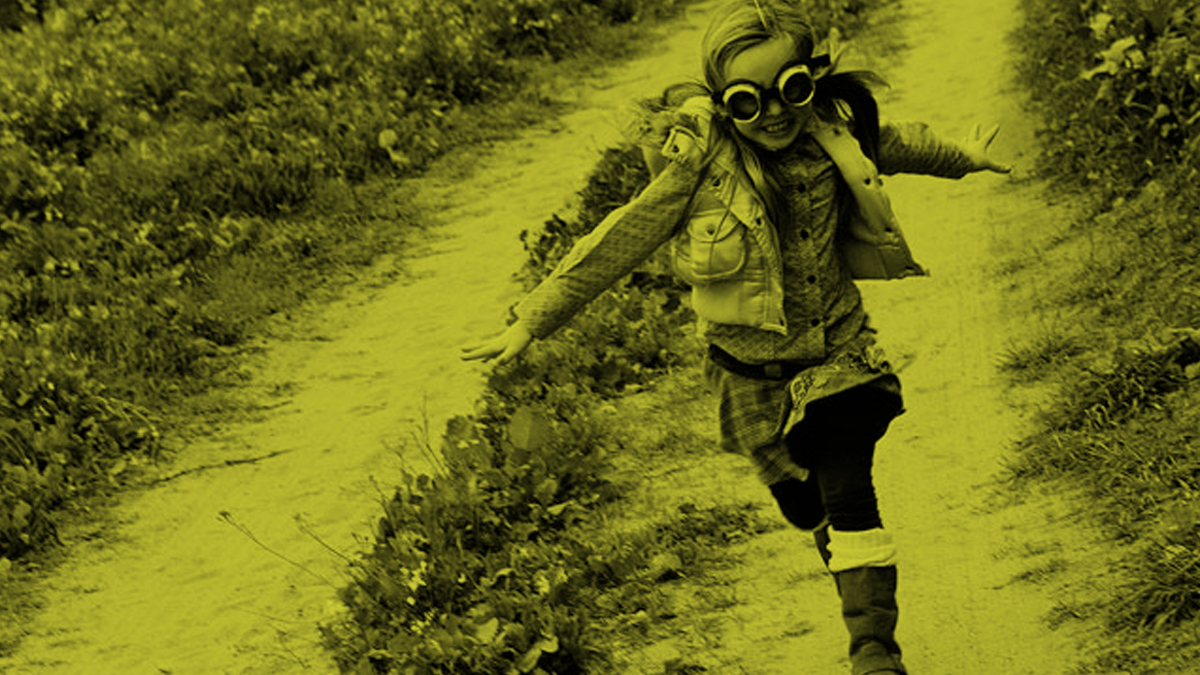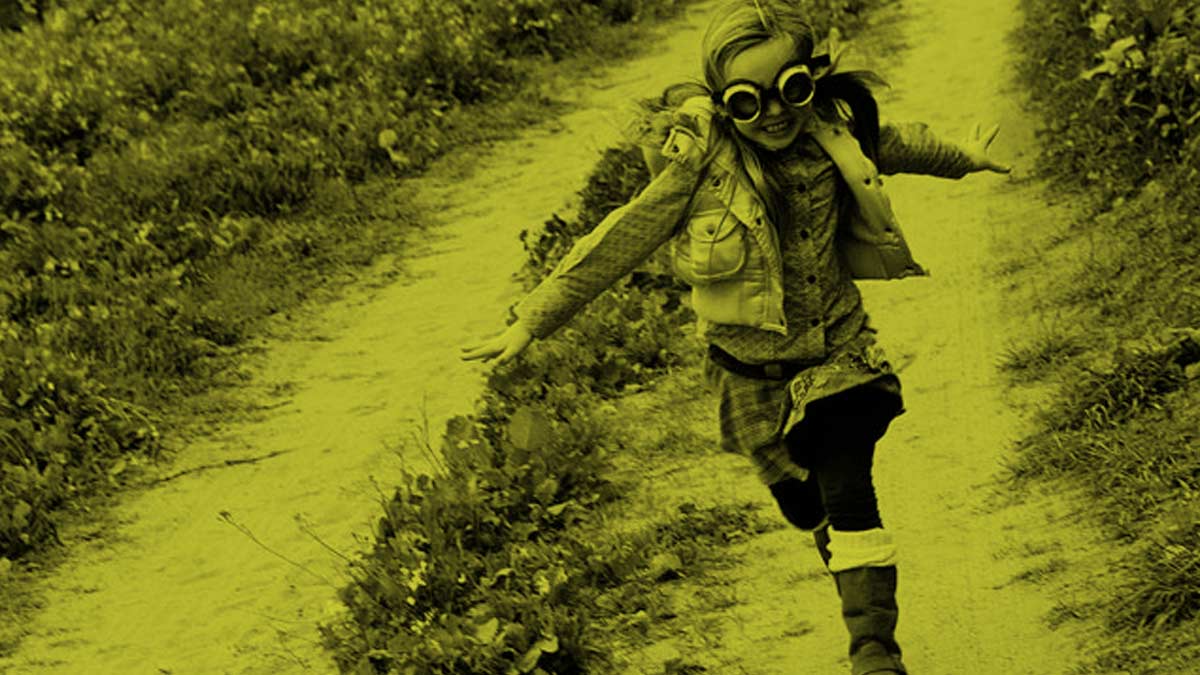Can You Feel?
What can you do to assure you are delivering a product, a service, or an experience with that kind of benefit? Something people really feel.
Dominique Apollon is 45 years old. But he almost started crying as he put on his band-aid.
It wasn’t because his cut hurt really bad. Although it probably did. He was almost brought to tears because his bandage was brown. Because Dominique is brown, too.
After he pulled himself together, he took a picture of the bandage on his hand and posted it on Twitter. It got re-tweeted over 100k times and picked up by major media channels.
People really felt it.
Tru-Colour Bandages, the company that made the bandage that Dominique was wearing was started by a man who was discouraged when he couldn’t find a band-aid that matched his African American son’s skin tone.
But the power of the Tru-Colour brand isn’t that it stops cuts from bleeding better than other bandages. Or that it sticks better and doesn't come off when it gets wet.
The power is in how it makes people feel about themselves. As Dominique put it, “I really just felt like I belonged, like I was welcomed, like I was valued.”
What can you do to assure you are delivering a product, a service, or an experience with that kind of benefit?
Something people really feel.
The Hot Duck: A Tale of Brand Differentiation
On display at the duck pond was the perfect embodiment of Rule #1 in branding: Stand out from your competition.
The ducks in Central Park in New York City have a cushy gig. They paddle around, they look cute, they create a picturesque tableau in the pond. The females are speckled brown, the males have handsome green heads. People like them, they bring their kids to see them, they feed them breadcrumbs. The situation worked for everybody.
But then he showed up. He being a Mandarin Duck who just dropped in one day and threw the whole operation into a tizzy. New Yorkers, habitual nicknamers, started calling him the “Hot Duck”.
Why hot? Mandarin Ducks are an explosion of spectacular colors and swooping patterns of feathers formed into a shape of a duck. They’re breathtaking.
Suddenly, there were crowds of people at the duck pond. Throngs of tourists with huge zoom lenses. Suddenly all that people could see or talk about was: That. One. Duck.
On display at the duck pond was the perfect embodiment of Rule #1 in branding: Stand out from your competition. Like Tesla, Virgin, Uber, you have rise above the sea of sameness and make a bold statement. Ruffle feathers. Redefine how people see your category.
You have to be the Hot Duck.
Putting in the Reps
With any type of content marketing, it can take a while to see results.
I had the pleasure of talking with Antonio Centeno last week in London. Antonio is the creator behind the “Real Men Real Style” YouTube channel. His most popular video, “How to Keep Your Shirt Tucked In ALL DAY” has 12 million views.
When Antonio started out with YouTube he was filming in his basement which had a dirt floor. He always wore a jacket and tie, but he didn’t wear dress shoes. He didn’t want to get them dirty. And because his early videos were shot from the waist up, a lot of the time he wasn’t even wearing pants.
Antonio filmed late at night, after work and after his young kids had gone to bed, so he could concentrate. He posted over 150 videos before he broke 10,000 subscribers. He compares that time period to lifting weights at the gym. He calls it “putting in the reps”.
With any type of content marketing, it can take a while to see results. But if you put in the reps, the results will come. Today, Real Men Real Style is a seven figure business with corporate sponsorship, a podcast, live conference events and over 2.1 million subscribers.
Because Antonio put in the reps.
Our New Frankenword
Brand design is becoming more business and business is becoming more creative. They are merging. Those that embrace the merger will thrive and those that do not will wither.
A portmanteau is a linguistic blend in which parts of multiple words or their sounds are combined into a new word. Smoke and fog combining to become smog. Motor and hotel becoming motel.
A frankenword.
I was looking for a way to describe something that is a duality, a symbiosis, two things that exist in co-dependency. Why? Because I think the branding and business worlds need a new name.
The world of design and the world of business are converging. They are fueling and sustaining each other in increasingly inextricable ways. For businesses to succeed in today’s commercial ecosystem they are required to be more and more creative, producing visually engaging content in an ever-expanding array of marketing channels.
For creative professionals to succeed it's necessary to be fluent in the machinations of finance, strategy, business, marketing, and in demonstrating the ROI of branding to clients.
Brand design is becoming more business and business is becoming more creative. They are merging. Those that embrace the merger will thrive and those that do not will wither.
Desiness? Bizign? Crearketing? Entrepreativity?
What is the design+business/business+creativity frankenword?
Don't Be Dr. Dynamite
If you could capture the single most important quality that creates a successful brand, it boils down to differentiation.
A few years ago I was working on private-label food brands for big grocery retailers. I called it “big brand surfing”. That’s when you design products with names, colors, fonts and packaging that sound, look and feel remarkably similar to a major brand.
Think Dr. Pepper vs. Safeway’s Dr. Dynamite. Generally, the play is about price. But what they are really trading on is similarity. They try to look the same. They try to taste the same. You can sell a lot of stuff that way, but you are just surfing another brand’s wave. Success breeds clones.
Personal brands fall victim to this, too. On Instagram, social media star wannabes are increasingly adopting a popular, yet homogenized expression of beauty and now no one can tell them apart.
If you could capture the single most important quality that creates a successful brand, it boils down to differentiation.
Have you looked at your competition lately? How can you separate yourself from the pack? Aspire to a unique expression of your brand.
Surf your own wave.
Finding the "Wow!"
When you ask the right questions and then actively listen, a mysterious and convoluted problem becomes a clear signal.
SETI is a collective term for anything that concerns the search for extraterrestrial life in the universe. SETI asks the question: Is there anyone out there?
In 1955, Ohio State University built a telescope they called “Big Ear” to continuously scan the cosmos for radio signals. It wasn’t until 1977 that Jerry Ehman, a project volunteer, witnessed a startlingly strong signal received by the telescope. On the computer printout of the data he famously wrote “Wow!” in the margin.
It only happened once. But they heard it. They heard it because they were actively listening.
A couple weeks ago we conducted a strategy offsite with a client in Canada. She has a interconnected series of brands and wanted clarity on the best way to organize and grow her businesses.
We didn’t approach the session with a specific point of view or predetermined answers. What we did was ask the right questions. And then we listened.
When you actively listen - a mysterious and convoluted problem can be distilled into a clear signal. At the end of the day, the wall was covered with giant Post-It notes. On the last one we wrote “Wow!” in the margin.
Retail Trend: The Cattle Chute Method
Retailers like Amazon are using The Cattle Chute Method to drive shoppers to their own private label products. How do we compete?
Cows are distractible. They have 360° wide-angle vision and are confused by everything from moving shadows to puddles of water, as well as any surface they can see though. To get cows to go where you want them to go, you line them up single file in a cattle chute.
It’s like putting blinders on a horse: you set it up so they are seeing only what you want them to see.
Last week the New York Times published an article about how Amazon has developed over 100 private label brands - with dozens more planned. If you search for a battery, a cable, or some other household item you will find Amazon Basics dominating the top results. It's a shopper cattle chute.
The best way to compete against the encroachment of private label is through superior brand recognition, product quality and design. To create your cattle chute you must eliminate customer distractions. You show them only exceptional brand visuals and create a simple, compelling customer journey and experience.
Are your customers seeing only what you want them to see?
Different Is Better Than Better
The savvy folks at hub by Premier Inn noticed an empty quadrant in the X/Y map of the competitive landscape of the hotel industry in London. So they did what any smart brand does, they filled it.
If you’ve ever stayed in central London you know that the hotels are fantastic. The best.
There are hotels that have old world charm that come in a range of prices. There are contemporary design hotels like St. Martins Lane but these are always very pricey. What didn’t exist was a high-tech high-design option available at a lower price point.
The savvy folks at hub by Premier Inn noticed this empty quadrant in the X/Y map of the competitive landscape. So they did what any smart brand does, they filled it.
I stayed at hub by Premier Inn when I was at a conference recently. My room was about 9 x 14 feet - about the size of a generous jail cell. There was no window, just a backlit glass panel that made you feel like there was one. The headboard was a touchscreen that controlled everything from the “do not disturb” sign outside to the A/C. The interior design was so inspiring and clever I never felt deprived. In fact, I felt smart, stylish and just a little bit richer.
By expertly delivering on an unmet need, hub by Premier Inn has expanded to 40 locations in under 5 years. Hub is killing it.
Take a fresh look at your competitive landscape. Does everyone look the same? Are they offering the same things, in the same way? Where is the white space that you can fill?
Your Best Self: 7 Mantras for Designers & Entrepreneurs
Mantras are not just for meditating. Mantras are simply ideas and philosophies to live by. They have one purpose: to keep us on track. They prevent us from going a down a rabbit hole.
Mantras are not just for meditating. Mantras are simply ideas and philosophies to live by. Some people call them maxims, mottos or catchphrases. They have one purpose: to keep us on track. They prevent us from going a down a rabbit hole. They act as guardrails for our thoughts and actions so we can focus our energy.
Here are seven mantras that I think are valuable for designers and entrepreneurs to keep in mind.
#1 Be human.
When your brand is your business, you can sometimes act more like your brand than yourself. No one wants to work with a brand robot – a brandbot. Strategy is great, processes are great, brand tenets are great, but underneath it all we're people. We're original, quirky, and unpredictable. In other words, we’re human. As a businessperson, you do represent a brand, but don’t hold back on showing your humanity (it’s called the Pratfall Effect). Be personable, because people like to work with people that they like. Be humble, because people like to work with people with compassion. Be flexible, because people like to work with people who are open to new things. Most importantly, be you.
#2 Choose fun.
We got into this line of work because we didn't want to have an uninspiring, humdrum life. We became designers and entrepreneurs because we wanted excitement. We wanted to have fun. We wanted to do creative things. Design and entrepreneurship are tough fields, and you have to work really hard at it to be successful. But remember why you're doing it. You're doing it to create a fun, invigorating, extraordinary life for yourself. So try not to take yourself too seriously. Throughout the day you make thousands of choices. As much as you can, choose fun.
#3 What’s the worst that can happen?
Fear can be really debilitating. Whether it’s fear of trying something new, putting ourselves out there or going against the grain, fear can stop you dead in your tracks. Instead of letting fear guide your action - or inaction, think through the fear to the very end. “What’s the worst thing that can happen if things go wrong?” is a powerful question that can shrink fear dramatically. Think it through; Will you get fired? Lose your apartment? Lose your girlfriend? Most of the time these imaginary disasters never happen, and once you realize that, it frees you up to be more courageous and try new things. And if something does go wrong, simply ask for forgiveness. Making a mistake is never the end of everything. Put fear in its place. Be brave.
#4 Build your resources.
As designers and entrepreneurs, we often like to do everything ourselves. But ultimately, if we want to do bigger and better things, we need additional resources. Be proactive about gathering service providers, companies, printers, coders, any specialists that could help you at some point in time.
Start creating and curating a cache of professionals that allow you to do increasingly ambitious work for your clients. Keep those connections warm so they're there when you need them. Pick a day of the week, say, “Freelancer Friday” to reach out to one or two of your connections. Send a quick text or email, ask them what they’re up to, like some of their social media posts (see more suggestions here). It only takes a few minutes to reach out and if you do it faithfully for a few weeks, you’ll find yourself top-of-mind with them and ready for any project, at any time.
#5 First things first.
Procrastination is a killer for designers and entrepreneurs. Prioritizing tasks and projects can be difficult, but it’s the backbone of success. Tim Ferriss, human guinea pig and lifehacker, has some great advice, “You can spend the whole of the day busy, but fail to tackle the most important items, which in many cases are the hardest things on your plate. So isolate the one or two most important things you need to accomplish today. One or two only.” (Inc.com)
I noticed that Tim was right. Now I move the hardest things to the top of the list and do those first. It pays off. Mark Twain, commenting on doing the dreaded tasks before the easy ones, said, “Eat a live frog first thing in the morning and nothing worse will happen to you the rest of the day.” Amen.
#6 Done is better than perfect.
Designers and entrepreneurs, as a group, are perfectionists. This trait serves us well most of the time, but if you lean too heavily on it, it becomes a crutch. Perfectionism is a way of resisting the future. “Perfect lets you stall, ask more questions, do more reviews, dumb it down, safe it up and generally avoid doing anything that might fail (or anything important),” (Seth Godin).
Instead of focusing on getting things done perfectly, focusing on just getting things done.
Get them out the door. Volume trumps perfection any day of the week. Consistency beats infrequency. More is better, and frequency boosts recognition for your brand. So instead of being a perfectionist and trying to massage every fine detail, get it out the door. No one is really going to notice that level of perfection except you. It's better to just get it done, and move on to the next thing.
#7 When in doubt, communicate.
Here’s the biggest complaint I've heard in my career from designers and people I've worked with; "I don't know what's going on. No one's telling me anything."
It's really hard to do your job well if you feel under-informed. Don’t wallow in victimhood about being out of the loop. It’s probably not intentional. Find the person who might know what you feel like you’re missing and ask them to brief you. On the flip-side, you have to make sure clients know what's going on in your head and you know what's going on in theirs. You need to be consistently aligned to deliver your best work. There is no other way to do this than to communicate. Over-communicate, even. Especially when the news that you're trying to communicate is bad. Always recap conversations and meetings in writing. Communication is a conflict killer.
These mantras have helped me keep my thoughts and projects focused and on track. They’ve helped me sidestep many professional potholes. If some of these resonate with you, I hope you incorporate them into your daily life. Make them visible. Put them on a post-it, make a graphic as your home screen, or tack it on your office wall. Make up your own mantras. They will enhance your focus, energy and undoubtedly smooth your pathway to success.
The Sexy Potato
There are watershed moments in our professional lives where something happens that changes everything.
There are watershed moments in our professional lives where something happens that changes everything. Mine was during a photo shoot for Lay’s potato chips.
Lay’s is, maybe unsurprisingly to salty snack fans, the largest food brand in the world, selling in 50+ countries with revenue of $1.7 billion. With a business that big you have to be very careful what you do in a package redesign - well, for obvious reasons.
So there we were, shooting the sliced raw potato that appears on the back of the core plain flavor of Lay’s. My marketing partner was not happy. The raw potato was unattractive. The raw potato was missing irresistible flavor appeal, that je ne sais quoi.
She said “Philip, we need a really sexy potato”. It was in that moment that I realized I was not in the right place. And that I needed to make a change.
We finished the shoot. We had successfully coaxed the requisite appeal from the potato - as reluctant a subject as she was. But something inside me had shifted. Four weeks later I resigned from Pepsico. A potato was my tipping point.
We don’t get to choose our watershed moments. The trick is to use them as a springboard for positive change when they happen. For me it was a sexy potato. A potato that launched the most exciting and fulfilling chapter of my life.
The Big Fish
Diving deep into a brand, marketing agencies can shine a light on new customers or market opportunities their client may have had trouble seeing. It’s a symbiotic relationship.
Anyone who knows me knows I love scuba diving. I love being in the company of fish. Particularly tarpon. Tarpon are huge. They’re metallic silver, can be over 6 feet long, 200 lbs. and are insanely fast. Like human-sized silver bullet torpedos in a hurry.
There’s a night dive in the Cayman Islands where you can lead tarpon around with your flashlight like a cat with a laserpointer. How? By shining the light just in front of their nose they can see smaller fish and zoom around in a midnight-snack feeding frenzy. It’s amazing to watch. They’re happy - and you have an incredible time too.
What I love most about strategy and marketing is that I am helping my clients brands find sustenance. By diving into their business I can shine a spotlight on new customers or markets they may have had trouble seeing. It’s a symbiotic relationship. They need the help of an outsider with special tools to thrive and by engaging we agency folks benefit also.
There is nothing better than being a facilitator of others success. Because when you are, everybody wins.
The 7 Commandments of Brand Design
When I talk about branding, I often talk about the 3 R’s: recognized, remembered and revered. The success of any brand can be measured by how well it has achieved those three simple words. But how do you get there?
"Your brand is the single most important investment that you'll make in your business."
- Steve Forbes
When I talk about branding, I often talk about the 3 R’s: recognized, remembered and revered. The success of any brand can be measured by how well it has achieved those three simple words. But how do you get there? The design of a brand has to hit on a lot of cylinders to get to those 3 R’s. Here are seven of the key attributes of a brand’s design that are critical to success.
1st COMMANDMENT: Make It Beautiful
Beautiful design is proven to be a quantifiable competitive advantage. Having an elegant, contemporary design is what today’s consumers expect. Great brand design is easy to look at. You need to look successful to be successful. A homely, amateurish brand design is going to make people click away from you, and you're not going to build your business that way. No one is going to volunteer to be an evangelist for an ugly brand.
2nd COMMANDMENT: Make It Simple
The world is way too noisy and too complicated. We're inundated with a tremendous amount of visual stimulation and information every moment. Everyone's looking for simplicity in their lives. If you make it simple, you make it a less complicated and less stressful experience to interact with your brand. You also make it easier to be remembered (there’s an R again) and easier for customers to communicate what you do to others.
3rd COMMANDMENT: Make it Strategic
Hoping it looks good is not a strategy. Your brand design has to be created with intentional focus on what your target customer avatar wants and is expecting from you. You have to display an aspirational aesthetic and speak their visual and verbal language. Great brand design is about reduction. Getting rid of all that is unnecessary and boiling down to the essence. Brand design strategy is as much what not to show as it is what to show. All design execution needs to stem directly from the brand strategy.
4th COMMANDMENT: Communicate
All strategic brand design is communication. You need to communicate who you are, what you do, how you do it, how you do it differently and why people should care. Powerful brand design communicates through three things: semiotics, the meaning of symbols and images, through color theory and color psychology, and through verbal or written communication. By artistically weaving those three together, you tell a brand story.
5th COMMANDMENT: Be Different
From the time we're adolescents, we all seek to fit in. Humans naturally gravitate towards the median, to “normal”. It takes a lot of work, concentration and real courage to be different. Just like the brand’s unique selling proposition, having a brand design that visually differentiates you from your competitive environment can make breaking through the noise a hell of a lot easier. Just ask Method the home cleaning products brand. By adopting a product line in clear bottles with whimsical shapes and a rainbow of liquid colors they smashed through the sea of blue and orange dominating the laundry aisle owned by Tide and Gain. Not an easy thing to do. But they did it through design.
6th COMMANDMENT: Be Consistent
In order to be recognized, you have to be remembered, and in order to be remembered, you have to be consistent. Everywhere your brand shows up, at every brand touch-point; online, retail, social, outdoor, packaging, media, your imagery, your color, all of your brand design elements have to be absolutely consistent. Every inconsistent touch-point erodes customer recognition. Inconsistency bleeds brand equity.
7th COMMANDMENT: Be Memorable
If you're simple, if you're different, if you're consistent and if you communicate, you'll be memorable. And being memorable is the gold standard of brand design. If you're memorable, people will return to you, and they'll recognize you wherever they come across you. You'll create brand evangelists who will ultimately do the work of building your brand for you. And it doesn’t get better than that. Amen.
photo: Charlton Heston in Cecile B. DeMille film "The Ten Commandments"
The Brand from the Black Lagoon
Brands can learn something by observing how Hollywood approaches classic films. What’s the difference between classic and dated? Is there an aspect of your brand that is due for a remake?
When the film The Shape of Water was released my first response was disbelief. One of my favorite films as a kid was The Creature from the Black Lagoon, a black and white classic that was terrifying and yet somehow comforting in memory. How could they remake it?
But when I saw the new version I was stunned by its beauty and poetry and thankfully it was a lot less scary. I guess I wasn’t alone. It just received the Oscar for Best Picture.
Last week I was contacted by a prospective client who wants me to revise their brand identity. In doing my research I checked out their website. The site was like looking at a faded postcard from 1991. Unresponsive, a clunky columned layout, low resolution photographs.
The client had no idea how dated it had become. They remembered it as classic and comfortable.
Is there an aspect of your brand that is due for a remake? Something you might revise to reach a level of beauty, poetry and performance that you hadn’t thought possible? And maybe at the same time make a little less scary?
photo: ©Universal Pictures
You're Making Too Much Noise
The amount of noise that we have to filter today is ridiculous. The signal that we want to hear, that holds a meaningful message, is getting harder to discern.
At Orfield Labs in Minneapolis there is something called an anechoic chamber. Also known as the world’s quietest room. The sound level inside it is -9 decibels. There is literally less than zero ambient noise. When you are in it, the only signal you hear is the sound your own ears make (yes, they actually produce a little noise). That, and your own heart beating.
The amount of noise that we have to filter today is ridiculous. The signal that we want to hear, that holds a meaningful message, is getting harder to discern. Unfortunately, sometimes we are responsible for creating this noise ourselves. Trying to be on too many social platforms at once, reflecting and bouncing too much content around. You can drown yourself out.
This is why I left Twitter last year (for the most part). My analytics revealed the promotions for my agency were mainly reaching the feeds of other marketers - who were all busy reverberating their own noise. Everyone was talking, but no one was really listening.
How quiet is the room you’ve chosen to be in? Is your customer there with you? They need to be able to hear the heartbeat of your message.
The Shark and the Chumsicle
When feeding off new trends you have to strategize where you want to play. Do you want to be the first to sink your teeth in? Do you know where are you are in the food chain?
Sharks are trendy. There is a shark feeding dive I do in the Bahamas where they use a 3ft. ball of frozen fish chum (yum!) suspended from a float in 40 feet of water. They rev the boat engines like a dinner bell. In a blink of an eye there are 60 sharks milling around.
The sharks start circling the “chumsicle” in a wide rotating arc. You get to join in and swim along side them. They don’t even notice. The sharks are busy strategizing.
Soon the most ambitious peel off and attack the bait. But they have a hard time because the chumcicle is still frozen. Later, it begins to thaw and the action gives new meaning to the word “frenzy”. At the end, when the ball is dwindling, the remaining sharks fill up on what’s fallen to the sandy bottom.
When feeding off new trends you have to strategize where you want to play. Do you want to be the first to try to sink your teeth in? Do you want to join when it’s a frenzy, the food is flying and the competition is the fiercest? Or do you exercise patience and benefit from the work of others? There is no one correct answer. You just have to commit to where you want to be in the food chain.
photo credit: where2wander.com
Schrödinger's Cookie
Marketing folks know that any time you create a line extension, one consideration is whether or not it will cannibalize your mainline product. However, the greatest worry is always: “Will it degrade the brand?”.
Pop quiz. When I say these flavors, what do you think of? Biscuits and Gravy, Greek Gyro, BLT, Cappucino and NY Reuben. Well, I’ll tell you what I don’t think of. Lay’s Potato Chips. But that’s what they are. The result of Lay’s “Do Us Flavor” campaign of limited-edition chips.
OK, let’s try again. Jelly Donut, Mississippi Mud Pie, Raspberry Danish, English Breakfast Tea and, wait for it…Swedish Fish. Give up? Oreos.
Marketing folks know that any time you create a line extension, one consideration is whether or not it will cannibalize your mainline product. However, the greatest worry is always: “Will it degrade the brand?”.
New flavors can breathe life and excitement into somewhat boring consumer staples. Happily, they give their social media teams something to tweet about. But they beg the existential question: When does an Oreo become not an Oreo? When does it become a parody of itself?
Experimentation and innovation energize and revitalize brands. But care should be taken that we don’t try too hard to fix something that isn’t broken. I mean, yesterday I walked by Pumpkin Spice Twinkies in the store. Is nothing sacred?
I'm Watching You
In business and design we often develop a products by thinking about our customer target and then creating something we think they will want. But often we land far off the mark and wonder what went wrong.
Over a period of 6 years, the photographer John Thackwray photographed the bedrooms of 1200 millennials from around the world. The range of physical environments, materials, colors and collections is absolutely fascinating.
In business and design we often develop a products by thinking about our customer target and then creating something we think they will want. But often we land far off the mark and wonder what went wrong.
What went wrong lies in the difference between thinking and observing.
Successful marketing relies on an intimate knowledge of your customer. You can’t learn what you want to know by asking them, because what they say they want and what they end up buying is often very different. Just ask someone who runs focus groups.
You have to observe them.
After looking at the bedroom photograph of just one of these millennials, I guarantee you could design a product experience that would delight them.
I am sure you have thought long and hard about your customer but have you really observed them?
This Is Why You Need A Drone
Companies trying to create brand strategies internally are hampered by the same thing: a lack of perspective. They’re just too close. Strategic accuracy requires an aerial view
During our town’s 4th of July fireworks I noticed something new. Little red lights up in the sky over the crowd. Aliens watching the festivities? Nope. Drones. Filming the fireworks from just outside the explosions.
High in the upper canopy of the Amazon, hovering above an active volcano, helping search and rescue teams, drones are giving us a new perspective. Perspectives we couldn’t get without their help.
Companies trying to create brand strategies internally are hampered by the same thing: a lack of perspective. They’re just too close. Strategic accuracy requires an aerial view to understand not only what the brand is about, but its competitive landscape and its customers.
Company insiders can create blindspots. CEO’s and CMO’s have strong ideas about what their company is or is not. Only an outsider has the independence to evaluate, recommend re-thinking, or even setting aside these preconceptions.
Branding agencies are like drones. They can give you that birds-eye perspective you simply cannot have no matter how high up you are in a company. Would your company benefit from seeing the fireworks from a different perspective?
photo: NANO CALVO/CORBIS
The Prince Needs A Logo
He sent me a detailed project brief. I sent him a proposal. He accepted it no questions asked. I thought this was a little odd, but I told myself everyone deserves an easy client once in a while. Don’t they?
Last month I got an email from a guy starting a furniture importing business. He needed a logo and pamphlet for his first trade show. Our phone connection was terrible, but he agreed without hesitation to my estimate of what it would cost.
He sent me a detailed project brief. I sent him a proposal. He accepted it no questions asked. I thought this was a little odd, but I told myself everyone deserves an easy client once in a while. Don’t they?
He wanted to pay the 50% deposit immediately by credit card. He was in a hurry. Too big of a hurry. I sent him the invoice. Then I got the email. It said: “I am going to pay you immediately, but I need a favor.”
That’s when I knew I was getting scammed. They want to pay you extra, then ask you to send the extra funds to another contractor for them. Then they dispute the credit card charge, and you’re out the money you relayed.
So I emailed a reply asking if by chance he was also a Nigerian prince. He never wrote back.
I keep telling myself I should have see it earlier. No clients are that easy. No clients ask no questions. But I mean, who scams design agencies? Who sets up a grift by asking for a logo and a pamphlet? A prince does apparently.
photo source: www.thetechbreak.com
All The Feels
Branding 101: When you speak to someone’s emotional center rather than their logical mind you solicit a response that is stronger, deeper, longer-lasting and primal.
Recently, I worked with a client who specializes in shipping stuff to and from Latin America. Experts in Third Party Logistics. Their competition’s websites are full of online calculators for weights, fees, dates, lists of countries. Lots of data. My client’s website is not. Their website talks about things like how it feels when your boss congratulates you for hitting that impossible shipping deadline.
In the book “Brand Immortality: How Brands Can Live Long and Prosper”, the authors analyzed 1400 case studies of advertising campaigns. They found that campaigns with purely emotional content almost doubled the performance of ads with only rational content. 31% vs. 16%. We act on what we feel. Not what we think.
When you speak to someone’s emotional center rather than their logical mind you solicit a response that is stronger, deeper, longer-lasting and primal.
That’s why I always counsel my clients on how critical it is to know their customers motivation. Not only what functional problem they want solved, but how they want to feel when that happens.
Because the feeling is what they are seeking. Security, joy, safety, recognition. If you can describe and deliver the feeling, the mind will follow.
photo credit: Alk3r@flickr.com



